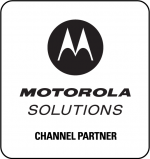In Building Coverage Solutions
Are you struggling with limited two-way radio range or poor cell phone connectivity? A distributed antenna system (DAS) can solve coverage issues, no matter the range or density of your site. Our solutions for Inbuilding Radio Coverage in Dallas will help improve your system so that your business can operate with effortless communication.
BDA – Bi-directional Amplifiers
Our Bi-Directional Amplifiers (BDA) boost signals that sustain two-way radio communications throughout challenging areas of your facility. There are two types of BDA, one for two-way radios and another for cellular phones.
Unfortunately, public safety bi-directional amps for two-way radio systems and a BDA intended for cellular phone usage are completely different and cannot be interchanged. We offer a wide range of Bi-Directional Amplifiers, and our team can help you determine which is the best for your building, network, and communication needs.
We can also help install your BDA so that it’s suitable for your system requirements. Our cost-effective solutions will help your employees remain productive and efficient with uninterrupted, seamless communication.
DAS – Distributed Antenna Systems
Our DAS picks up wireless signals that come into buildings and deliver them to remote spots. The network of cables already located in your facility is the core of the DAS, but our cabling has splitters that divert part of the system to locations experiencing connectivity issues.
Distributed Antenna Systems from Megahertz Technology can help you achieve an effective communications infrastructure. There are three main types of DAS, each with their own advantages and costs:
- Active: Fiber-optic cable is used to distribute signals between central sources and nodes placed around a building. Active systems provide the most expansive coverage.
- Passive: Components such as coaxial cable, BDA, and splitters are used to distribute signals.
- Hybrid: Some fiber is used for signal distribution, but the passive coaxial cable is more heavily relied upon.
Lower-cost options generally correspond to reduced quality and a shorter lifespan, resulting in higher costs in the long term due to replacements and repairs. Our team will evaluate your infrastructure and business needs, and recommend the best solution for Inbuilding Cellular Coverage in Dallas.
What is IFC 510 Building Code?
The adoption of the International Fire Code (IFC), Section 510, requiring in-building coverage for public safety radio communication systems has caused some confusion and surprised some building owners and developers as most were unaware of this relatively new requirement.
IFC 510, specifies that “All new buildings shall have approved radio coverage for emergency responders within the building based upon the existing coverage levels of the public safety communication systems of the jurisdiction at the exterior of the building”. By adopting this requirement, public safety agency first responders will have more effective and reliable in-building radio communications.
Does the IFC 510 Building Code apply to my building?
Most new commercial buildings erected in Dallas, Texas (and many other municipalities) are subject to the IFC 510 building code and are required to be tested by qualified personnel.
In most cases, a “Letter of Certification” must be submitted to the local fire officials before they will issue a “Certificate of Occupancy”.
How do I find out if my building meets the IFC 510 requirements?
Trained and certified technicians utilize specialized equipment to measure the transmitted Public Safety Radio System signal levels that are penetrating from outside the building, as well as, the Emergency Responder radio signal levels transmitting back to the Public Safety Radio System tower site, from inside the building.
Per IFC 510, two-way radio coverage must be a minimum of 95% on each floor of the building. If the building passes, a letter is issued to certify IFC 510 compliance. If the building fails, it is the responsibility of the building owner to have an “Emergency Responder Radio Coverage System” (ERRCS) installed and maintained to provide the required radio coverage per IFC 510. The system must also include a secondary power source capable of operating the ERRCS for a period of at least 24 hours.
Who can test and certify buildings for the IFC 510 building code?
Megahertz Technology can test and certify buildings for IFC 510. Our team of qualified RF Design Engineers and Test Technicians have over 30 years of experience designing, testing and maintaining Public Safety Radio Communications Systems.
We utilize industry standard, calibrated test equipment to perform on-site spectrum analysis of radio signal levels to ensure compliance with IFC 510 requirements and work closely with local fire officials to verify that our testing services meet the agencies current regulatory requirements. A “Letter of Certification” for buildings that pass the testing is provided to local Fire Officials upon completion of the IFC 510 testing.
How can I include the cost for IFC 510 compliance in the budget for my new building?
Megahertz Technology can provide a budgetary proposal for an ERRCS system that will ensure your entire building will comply with IFC 510 requirements. Our team can also help you pre-plan for the installation of an ERRCS so that conduit, access panels and rooftop access for an antenna system can be included in your building’s budget and project plans.
Some components can even be pre-installed during construction to simplify the installation of the ERRCS. Compliance testing can be conducted prior to completion of the building to verify if the structure meets the IFC 510 code or if an ERRCS will be required. A final detailed proposal can be provided if the building (or portions of the building) fail the test.
Give your system the reliable network it deserves so that your employees can communicate quickly, effectively, and easily. Contact us today, so we can learn about your current resources, answer any questions, and help you design a system within your budget.


